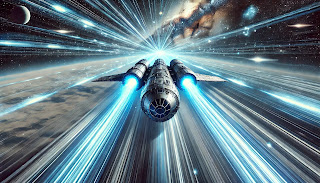Quantum Algorithms that Will Reshape AI
From Grover’s Search to Quantum-Enhanced Neural Networks
Artificial Intelligence (AI) as we know it is about to face a reckoning. Not in a dystopian, robot-takes-over kind of way—but through the arrival of quantum computing, which has begun to stretch the limits of what we thought machines could compute.
Let’s be clear: AI isn’t broken. But it's shackled—by classical computation, by exponential data complexity, and by processing architectures designed decades ago. What quantum algorithms promise isn’t just a faster version of today’s AI; they promise a qualitatively different future. Imagine neural networks that can train in polynomial time, optimization that bypasses local minima, or AI agents that can model uncertainty not by brute-force sampling, but through inherent quantum parallelism.
Below, we explore the quantum algorithms that are already reshaping the foundations of AI—and the ones poised to do so.
🔹 1. Grover’s Algorithm: The Quantum Shortcut to Search
What It Does:
Grover’s algorithm solves unstructured search problems quadratically faster than classical counterparts. While a classical search through N possibilities might require O(N) time, Grover gets it done in O(√N). That might not sound dramatic—until you realize many AI problems boil down to combinatorial searches over massive state spaces.
AI Applications:
-
Hyperparameter tuning in deep learning models
-
Rule-based systems for NLP and symbolic reasoning
-
Reinforcement learning, particularly for action selection over large state-action spaces
📌 Example: Imagine a robot trying to find the optimal action in a maze with 10,000 possible paths. A classical brute-force agent might test every path sequentially. A Grover-powered agent would only need to test about 100.
🔹 2. Quantum Support Vector Machines (QSVM)
What It Does:
Classical SVMs work well in high-dimensional spaces but become expensive to train as dimensionality grows. QSVMs use quantum kernels to map data into higher-dimensional Hilbert spaces, enabling faster and more powerful classification.
AI Applications:
-
Image classification with minimal training samples
-
Financial fraud detection using multidimensional transaction vectors
-
DNA sequence classification in bioinformatics
📌 Example: IBM has already demonstrated QSVMs classifying hand-written digits using just a few qubits. Classical SVMs would need hundreds of features to achieve the same confidence level.
🔹 3. Quantum Annealing and Optimization
What It Does:
Quantum annealing leverages quantum tunneling to escape local minima in optimization landscapes. This is ideal for problems like neural network training, where classical gradient descent often gets stuck.
AI Applications:
-
Training Boltzmann machines and energy-based models
-
Finding optimal neural network weights
-
Solving NP-hard planning problems in AI planning systems
📌 Example: D-Wave’s quantum annealers have been applied to optimize traffic routing for delivery drones—something classical optimization would struggle with due to rapidly changing variables.
🔹 4. Quantum Boltzmann Machines (QBMs)
What It Does:
QBMs are the quantum version of classical Boltzmann Machines (BMs), designed for generative tasks. They can sample from complex probability distributions more efficiently, thanks to the quantum superposition and entanglement they utilize.
AI Applications:
-
Generative models in creative AI (e.g., music, image generation)
-
Probabilistic inference for decision-making under uncertainty
-
Modeling quantum-physical phenomena for scientific AI agents
📌 Example: A QBM trained on human faces can generate hyperrealistic variations with uncanny coherence—something even GANs struggle to maintain across features.
🔹 5. Variational Quantum Circuits (VQCs)
What It Does:
VQCs are a hybrid approach—quantum circuits parameterized by classical optimization. They work similarly to neural networks but operate in quantum state space, enabling efficient function approximation and representation learning.
AI Applications:
-
Quantum-enhanced neural networks (QNNs)
-
Feature extraction in high-dimensional data
-
Hybrid reinforcement learning agents
📌 Example: In a pilot study, researchers used VQCs to outperform classical methods in classifying chemical data with fewer parameters and faster convergence.
🔹 6. Quantum Natural Gradient Descent
What It Does:
Gradient descent is the workhorse of machine learning. But when optimizing over quantum parameters (like those in VQCs), regular gradients aren’t efficient. Quantum natural gradients adjust for the geometry of quantum state space, providing faster convergence and better minima.
AI Applications:
-
Faster training of hybrid quantum-classical models
-
Fine-tuning of quantum language models
-
Precision medicine: optimizing treatment paths over multi-modal data
📌 Example: Quantum natural gradients have been used to train variational quantum classifiers with a 30% speedup over classical optimizers.
🔹 7. Quantum Reinforcement Learning (QRL)
What It Does:
QRL merges quantum mechanics with RL agents. It uses quantum policies, quantum value functions, and potentially quantum memory models to speed up exploration and learning.
AI Applications:
-
Real-time decision-making in high-stakes environments
-
Adaptive cyber-defense systems
-
Autonomous robotics in unstructured terrains
📌 Example: A quantum-enhanced RL agent can evaluate exponentially many strategies in parallel—ideal for autonomous navigation in dynamic environments like forests or warzones.
🔹 8. Amplitude Amplification Beyond Grover
What It Does:
While Grover’s search targets one correct solution, amplitude amplification can increase the probability of finding “good enough” solutions in probabilistic models. This is crucial for AI systems that operate under uncertainty.
AI Applications:
-
Quantum-enhanced probabilistic graphical models
-
Faster sampling from Bayesian networks
-
Probabilistic text generation or auto-completion
📌 Conclusion: The Quantum AI Horizon
Quantum computing isn’t about replacing AI. It’s about redefining it.
Today, we force AI models to learn on silicon hardware that’s fundamentally serial and deterministic. Quantum algorithms shift this paradigm: we enter a space where learning, inference, and decision-making can happen across infinite parallel realities, collapsed only when needed.
It’s not all hype—quantum hardware is still in its noisy, intermediate-scale stage (NISQ). But the foundations are being laid. Already, hybrid systems using just tens of qubits have shown quantum advantage in select tasks.
When the scale tips—when quantum hardware becomes robust and widespread—AI will no longer be limited by memory, time, or classical logic.
It’ll think like the universe: probabilistic, nonlinear, and profoundly powerful.








Comments
Post a Comment
Your Thoughts, Please!
Have an opinion? A question? Or just want to share your random thoughts? Drop a comment below—we’d love to hear from you!